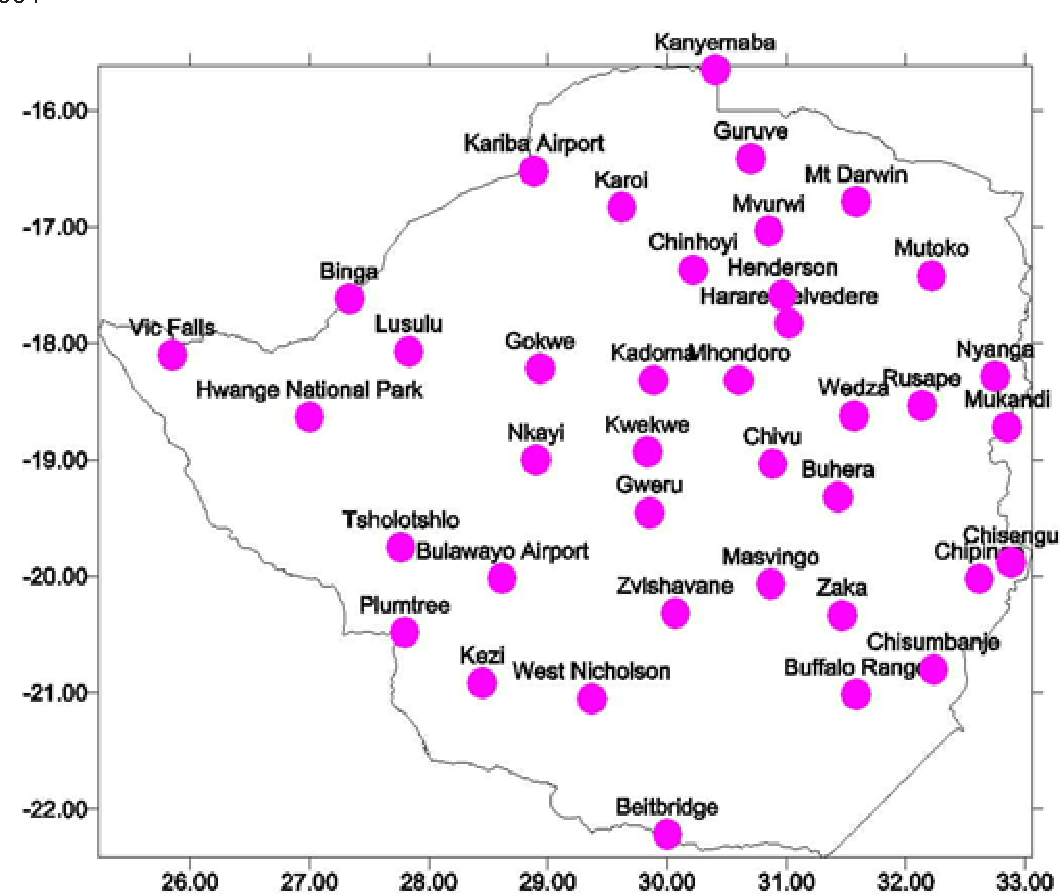Agro-Ecological Zones revised
CABINET yesterday adopted revised Zimbabwe Agro-Ecological Zones that replace the outdated ones done between 1945 and 1960 to take into account the change in climatic conditions in the various regions since then.
The new revised Agro-Ecological Zones are expected to assist farmers in planning their activities and boost productivity as part of Government’s efforts to improve food self-sufficiency. The revised Agro-Ecological Zones were done locally and were presented to Cabinet by Higher and Tertiary Education, Innovation, Science and Technology Development Minister, Professor Amon Murwira.
Information, Publicity and Broadcasting Services Minister, Monica Mutsvangwa, yesterday said the production of the new Agro-Ecological Zones was testimony to the success of Education 5.0 and would revolutionise agricultural planning.
“Based on the observed pattern of rainfall and temperature and their influence on agricultural practice, the revision of the Agro-Ecological Zones had two main objectives: (1) to redefine the Agro-Ecological Zones based on the current climate trend and recommend land-use practices for each zone, and (2) to develop an interactive software (Agro Zim mobile application) that would assist users of the updated Agro-Ecological Zones to get important spatially explicit information required to guide agricultural practice in Zimbabwe,” said Minister Mutsvangwa during a post-Cabinet briefing.
The Zimbabwe Agro-Ecological Zones map will be availed as a mobile application, bringing numerous benefits to farmers who will be able to access information related to their Agro-Ecological Zones; the appropriate land use; as well as the rainfall patterns, temperatures, and soil types of their areas; among other information.
The mobile application will be free to download and will be available on Google Play Store.
In his remarks, Prof Murwira said it was necessary to revise the Agro-Ecological Zones from the previous ones as a lot of changes had taken place due to climate change.
“You may find that a place that was once in region 2 is now in region 3 and that which was in region 3 is now in region 4,” he said.
He said the latest Agro-Ecological Zones showed that region 2 had shrunk while a new zone, 5B, which is the most arid region in the country, was created.
Meanwhile, Cabinet considered and approved proposals to re-focus and revitalise the Communal Areas Management Programme for Indigenous Resources (CAMPFIRE) that were presented by Transport and Infrastructural Development Minister Joel Biggie Matiza.
Minister Mutsvangwa said the proposals would result in a more effective CAMPFIRE that would benefit communities and further operationalise the devolution concept.
“The CAMPFIRE initiative targets the conservation and sustainable utilisation of wildlife and other natural resources as livelihood options for rural communities,” she said.
Cabinet noted that a widely consultative CAMPFIRE review process that was conducted in 2016, revealed that it was experiencing institutional, operational, legal and external challenges was highly dependent on hunting revenue, which generates 90 percent of the total revenue.
“Cabinet noted that CAMPFIRE should diversify into other activities, such as photographic safaris, ecotourism, and bird viewing to widen the revenue base and explore alternative markets for trophy hunting,” Minister Mutsvangwa said.
To guarantee proper regulation and enforcement of the stakeholder benefits and to resolve current misunderstandings between rural district councils and the producer communities, Cabinet concurred on the need to ensure that CAMPFIRE becomes more efficient and induces economic growth in line with Vision 2030.
“Cabinet thus approved the following: that a Statutory Instrument on CAMPFIRE Regulations be enacted clearly spelling out, among other things, the definition of Appropriate Authority status and roles, Appropriate Authority conferment procedures and revocation, producer communities, revenue sharing mechanisms and ratios, and accountability and institutional arrangements for a renewed CAMPFIRE model,” she said.
Cabinet also said the Parks and Wildlife Act, and the Environmental Management Act will be aligned to the Constitution, and that the provisions on the roles and responsibilities of ZimParks as regulator of CAMPFIRE be incorporated.-herald








